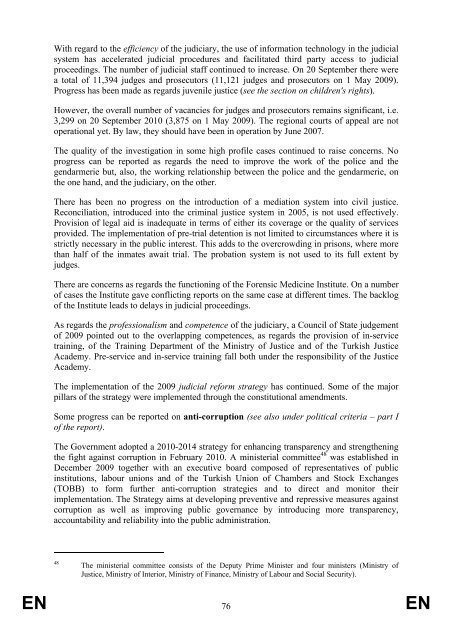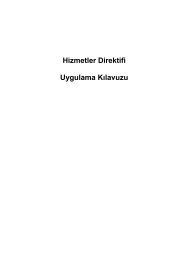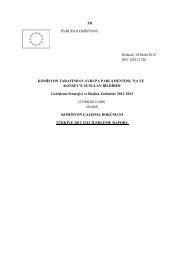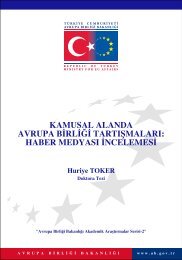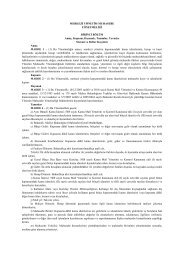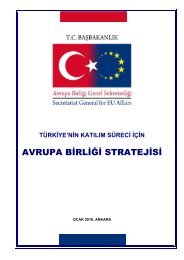2010 ilerleme raporu - Avrupa Birliği Bakanlığı
2010 ilerleme raporu - Avrupa Birliği Bakanlığı
2010 ilerleme raporu - Avrupa Birliği Bakanlığı
You also want an ePaper? Increase the reach of your titles
YUMPU automatically turns print PDFs into web optimized ePapers that Google loves.
With regard to the efficiency of the judiciary, the use of information technology in the judicialsystem has accelerated judicial procedures and facilitated third party access to judicialproceedings. The number of judicial staff continued to increase. On 20 September there werea total of 11,394 judges and prosecutors (11,121 judges and prosecutors on 1 May 2009).Progress has been made as regards juvenile justice (see the section on children's rights).However, the overall number of vacancies for judges and prosecutors remains significant, i.e.3,299 on 20 September <strong>2010</strong> (3,875 on 1 May 2009). The regional courts of appeal are notoperational yet. By law, they should have been in operation by June 2007.The quality of the investigation in some high profile cases continued to raise concerns. Noprogress can be reported as regards the need to improve the work of the police and thegendarmerie but, also, the working relationship between the police and the gendarmerie, onthe one hand, and the judiciary, on the other.There has been no progress on the introduction of a mediation system into civil justice.Reconciliation, introduced into the criminal justice system in 2005, is not used effectively.Provision of legal aid is inadequate in terms of either its coverage or the quality of servicesprovided. The implementation of pre-trial detention is not limited to circumstances where it isstrictly necessary in the public interest. This adds to the overcrowding in prisons, where morethan half of the inmates await trial. The probation system is not used to its full extent byjudges.There are concerns as regards the functioning of the Forensic Medicine Institute. On a numberof cases the Institute gave conflicting reports on the same case at different times. The backlogof the Institute leads to delays in judicial proceedings.As regards the professionalism and competence of the judiciary, a Council of State judgementof 2009 pointed out to the overlapping competences, as regards the provision of in-servicetraining, of the Training Department of the Ministry of Justice and of the Turkish JusticeAcademy. Pre-service and in-service training fall both under the responsibility of the JusticeAcademy.The implementation of the 2009 judicial reform strategy has continued. Some of the majorpillars of the strategy were implemented through the constitutional amendments.Some progress can be reported on anti-corruption (see also under political criteria – part Iof the report).The Government adopted a <strong>2010</strong>-2014 strategy for enhancing transparency and strengtheningthe fight against corruption in February <strong>2010</strong>. A ministerial committee 48 was established inDecember 2009 together with an executive board composed of representatives of publicinstitutions, labour unions and of the Turkish Union of Chambers and Stock Exchanges(TOBB) to form further anti-corruption strategies and to direct and monitor theirimplementation. The Strategy aims at developing preventive and repressive measures againstcorruption as well as improving public governance by introducing more transparency,accountability and reliability into the public administration.48The ministerial committee consists of the Deputy Prime Minister and four ministers (Ministry ofJustice, Ministry of Interior, Ministry of Finance, Ministry of Labour and Social Security).EN 76 EN


